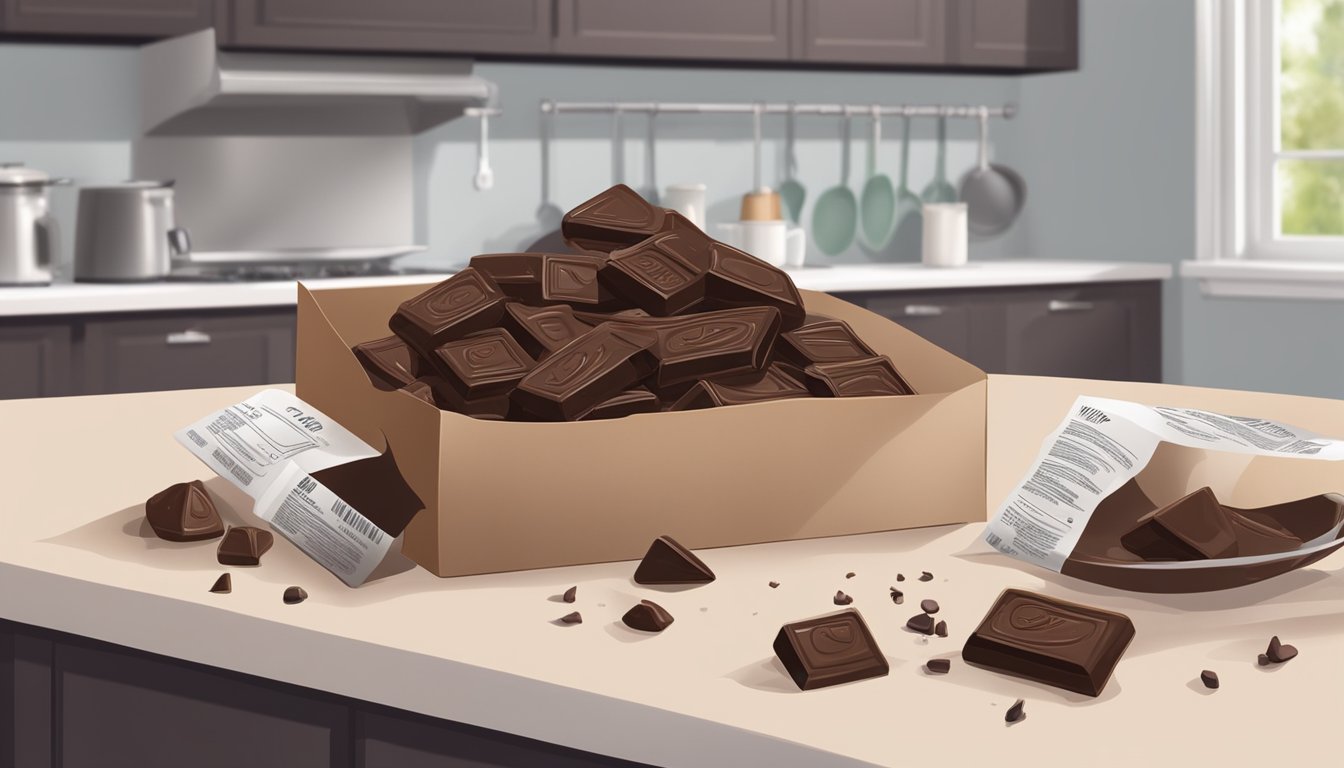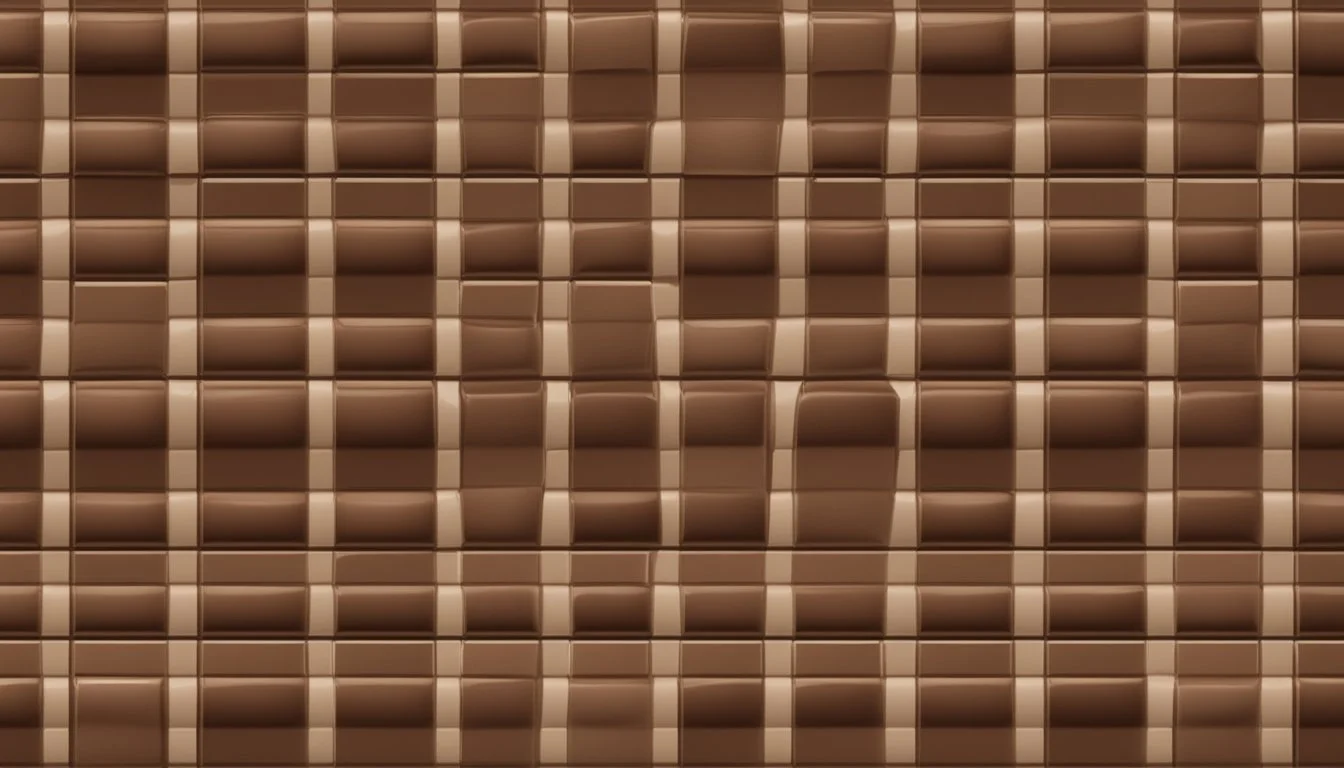Does Baking Chocolate Go Bad?
Understanding Shelf Life and Storage
Baking chocolate is a staple ingredient for many delicious recipes, yet questions about its longevity often linger. Yes, baking chocolate can go bad, but the type and storage conditions greatly affect its shelf life. For instance, dark chocolate can last longer than milk chocolate, owing to its lower milk content.
Quality is another essential factor. Exposure to air, light, and moisture can cause baking chocolate to deteriorate, compromising its taste and texture. Properly storing it—such as in a cool, dark place—can extend its usability, ensuring your desserts come out perfectly.
In terms of shelf life, unopened baking chocolate can remain good for up to two years. Once opened, it's best to use it within a few months to retain its optimal quality. By following these guidelines, home bakers can enjoy the rich, robust flavor of baking chocolate in all their culinary creations.
Understanding Baking Chocolate
Baking chocolate is a specific category designed for cooking and baking, differing in composition and quality from regular chocolate. Factors such as type, ingredients, and signs of freshness play crucial roles in ensuring the best results in recipes.
Types of Baking Chocolate
Baking chocolate comes in several types, each with unique properties and intended uses. Unsweetened chocolate contains no added sugar and has a strong, bitter taste, ideal for rich, flavorful desserts. Bittersweet and semi-sweet chocolates have varying levels of sugar, adding depth and complexity to baked goods. Milk chocolate, with its higher milk content, offers a sweeter, creamier profile but is less stable in high-heat applications. White chocolate lacks cocoa solids but provides a smooth, sweet option in recipes requiring a delicate flavor. Understanding these differences helps in selecting the right chocolate for each culinary need.
Ingredients and Composition
The quality and performance of baking chocolate depend largely on its ingredients. Cocoa content is a primary factor; higher cocoa percentages generally yield a stronger flavor. Cocoa butter contributes to the smoothness and melting quality, while sugar levels affect sweetness and texture. Milk content, present in milk and white chocolates, influences creaminess and stability. Additional ingredients such as nuts, fillings, and other flavors can enhance or alter the baking properties. Labels often list these components, making it easier to pick suitable chocolate based on recipe requirements.
Signs of Quality Chocolate
Identifying high-quality baking chocolate is essential for achieving the desired results. Appearance should be smooth and glossy, without visible blemishes or bloom (white streaks caused by fat or sugar crystallization). A pleasant odor indicative of cocoa richness suggests good quality. The taste should be well-balanced, reflecting the cocoa percentage and other ingredients. Texture matters; quality chocolate should melt evenly and smoothly, without grit. Buyers should check the expiration date and ensure proper storage conditions to maintain the chocolate's integrity. Recognizing these signs helps in choosing chocolate that delivers both flavor and performance in baking.
Shelf Life and Expiration
The durability of baking chocolate involves understanding how long it lasts and interpreting expiration dates. Proper storage and the type of chocolate play critical roles in extending its shelf life.
Determining Shelf Life
Baking chocolate has a longer shelf life compared to chocolate with higher milk content. Dark chocolate, which contains little to no milk solids, can last for up to two years if stored properly. Milk chocolate and white chocolate, having higher milk content, generally last for up to one year.
Proper storage is essential. Chocolate should be kept in a cool, dry place away from direct sunlight and strong odors. Refrigeration can extend shelf life but should be done carefully to avoid condensation, which can lead to texture changes and spoilage.
Reading Expiration Dates
The expiration date, often labeled as the "Best Before Date" or "Best-By Date," is a guideline for peak quality. This date tells you how long the chocolate will maintain its best flavor and texture. After this date, it is still generally safe to consume but may not taste as fresh.
Inspect the packaging for any signs of spoilage, such as unusual odors or discoloration. If the chocolate shows no signs of spoilage and has been stored correctly, it can often be used past the labeled date. Remember to trust your senses; if the chocolate smells off or has a strange texture, it’s best to discard it.
Factors Affecting Freshness
Proper storage plays a crucial role in maintaining the freshness of baking chocolate. Key factors such as temperature, moisture, humidity, and exposure to light and air can significantly impact its quality.
Impact of Temperature
Baking chocolate should be stored in a cool, dry place to avoid melting and spoilage. Ideal temperatures range between 60-68°F (15-20°C). Exposure to higher temperatures can cause the fat (cocoa butter) to separate, leading to a white film called fat bloom. While this is not harmful, it affects the texture and appearance.
Refrigerators and freezers can extend shelf life but may introduce moisture, leading to sugar bloom—a grainy texture on the chocolate’s surface. To mitigate this, wrap the chocolate in an airtight container before placing it in cold storage.
Moisture and Humidity
High humidity levels can be detrimental to baking chocolate. Aim for a humidity level below 50% to maintain its quality. Moisture exposure can cause sugar bloom, where sugar crystals form on the surface, altering texture and flavor.
It's also essential to ensure the storage area remains dry. Use airtight containers to prevent moisture from seeping in. This is particularly important if the chocolate is being stored in a refrigerator or freezer, where condensation can occur.
Light and Air Exposure
Exposure to light, particularly direct sunlight, can cause baking chocolate to deteriorate faster. Light exposure accelerates oxidation, leading to off-flavors and a decline in quality. Store chocolate in a dark place or use opaque containers to block light.
Air exposure also contributes to oxidation. Wrapping the chocolate tightly or using an airtight container can significantly reduce this risk. Oxidation not only affects the taste but can also lead to discoloration and loss of the chocolate's aromatic qualities.
In summary, maintain proper storage conditions by managing temperature, moisture, humidity, light, and air exposure to keep baking chocolate fresh and of high quality.
Recognizing Spoilage
When determining if baking chocolate has gone bad, several factors come into play. These include visible changes to the chocolate, alterations in taste and smell, and considerations for food safety.
Visible Signs of Spoilage
Spoilage in baking chocolate can manifest visibly. One common sign is white spots or a whitish film on the surface. This condition is known as chocolate bloom and comes in two forms: fat bloom and sugar bloom.
Fat bloom occurs when the fat in the chocolate separates and migrates to the surface, creating a white haze. Sugar bloom appears when moisture causes the sugar to dissolve and then re-crystallize on the surface. While these blooms may not indicate the chocolate is unsafe to eat, they can affect its quality.
Other signs include mold growth, which usually appears as fuzzy spots, and foreign formations. If mold is present, the chocolate should not be consumed, as it compromises food safety.
Taste and Odor Changes
Changes in taste and odor are critical indicators of whether baking chocolate has gone bad. Rancid chocolate often emits unpleasant odors due to the oxidation of fats. This is more common in chocolate that contains added oils besides cocoa butter.
A stale or off odor signifies that the chocolate may no longer be safe to eat. Conducting a taste test can help ascertain its quality. If the chocolate tastes bitter, sour, or significantly different from its original flavor, it is likely spoiled.
Eating stale chocolate won’t necessarily make one ill, but it certainly impacts the taste and quality of baked goods.
Safety of Eating Expired Chocolate
Safety concerns revolve around whether the chocolate has mold or rancid fats. If baking chocolate shows mold growth or emits a moldy smell, it should not be consumed.
Similarly, if the chocolate has become rancid due to expired fats, it is unsafe to eat. Though chocolate bloom can affect texture and appearance, it does not generally make chocolate harmful to consume.
Unopened baking chocolate stored properly can often remain safe to eat well past its expiration date, provided it lacks any of the discussed spoilage signs.
Storage and Preservation
Proper storage and preservation methods can significantly extend the shelf life of baking chocolate. Factors such as temperature, humidity, and storage conditions play crucial roles in maintaining its quality.
Optimal Storage Methods
Baking chocolate should be stored in a cool, dry place to prevent it from melting and losing its texture. Ideal temperature ranges are between 60-68°F (15-20°C). Ensure the storage area has a humidity level below 50% to avoid moisture buildup.
Using an airtight container helps protect the chocolate from absorbing external odors and getting contaminated. Avoid storing chocolate near strong-smelling foods or substances. Keep it out of direct sunlight and away from any heat sources.
Extending Shelf Life
To extend the shelf life of baking chocolate, consider storing it in the refrigerator or freezer, particularly if you live in a warm climate. If using the refrigerator, make sure the chocolate is in an airtight container to prevent condensation and odor absorption.
Freezing chocolate can also be effective. Before freezing, wrap it tightly in plastic wrap or aluminum foil and place it in a freezer-safe, airtight container. This method can help preserve the chocolate for up to two years without significant quality loss.
Effects of Freezing on Flavor
While freezing can extend the shelf life, it can affect the flavor and texture of the chocolate. Some subtle changes may occur, such as a slight loss of intensity in the chocolate's flavors.
When ready to use, allow the chocolate to thaw in the refrigerator to minimize condensation. Thawing at room temperature is not recommended because it can cause moisture to form on the chocolate, affecting both taste and texture. Proper freezing and thawing techniques are essential to maintaining the best quality.
Special Considerations
When dealing with baking chocolate, it's important to be mindful of factors such as chocolate bloom, cooking and baking usage, and special occasions which require specific types of chocolate.
Dealing With Chocolate Bloom
Chocolate bloom is a common concern for chocolate lovers. There are two types: sugar bloom and fat bloom. Sugar bloom occurs when moisture causes sugar to dissolve and recrystallize on the surface, usually forming a grainy texture.
Fat bloom happens when cocoa butter separates, causing a whitish or greyish film on the chocolate. Although bloom affects appearance, the chocolate is still safe to eat. Proper storage, ideally in a cool and dry place, can prevent bloom.
Chocolate in Cooking and Baking
Different types of chocolate serve various roles in cooking and baking. Blocks of baking chocolate and chocolate chips are often used in recipes due to their distinct properties. Baking chocolate, which is unsweetened, adds richness to desserts like brownies and cakes.
When melted, it can be used for coating truffles or making hot chocolate. Semi-sweet and dark chocolate have higher flavonoid and antioxidant content, offering both health benefits and deep flavors.
Chocolate for Special Occasions
Certain occasions call for high-quality, specific chocolate types. For example, handmade chocolates and truffles are popular choices. Valentine's Day often sees an uptick in demand for Belgian chocolate.
During Halloween, it’s common to use various chocolate bars and Halloween candy. For these occasions, maintaining the chocolate's integrity and taste is crucial, so selecting the right type and storing it properly is vital. This ensures it remains a delightful treat for any celebration.






